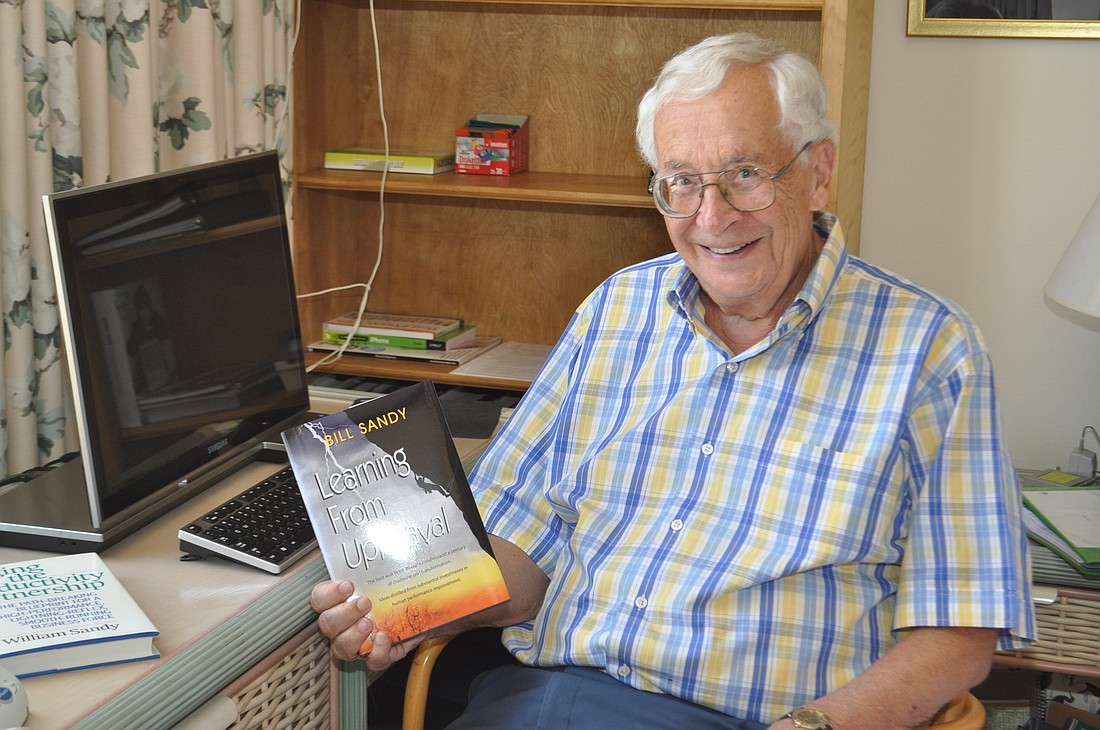- May 15, 2025
-
-
Loading

Loading

In 2009, the federal bailout of the auto industry split $60 billion between Chrysler and General Motors to rescue the companies. GM was Bill Sandy’s leading client when he owned the Sandy Corp., from which he retired in ’96. At the time he retired, GM was generating $132 million a week.
Sandy Corp. is a performance-improvement organization that combines consulting, training, communication, motivation and measurement of results. Sandy had been in the same industry for 43 years and learned valuable lessons along the road — especially the inevitable rollercoaster ride companies and individuals, like GM, face.
“Everyone is facing turbulence and upheaval — and it will be that way for a long time,” says Sandy, a Longboat Key resident. “It’s just the way things are.”
It was this way with Sandy’s business and also for his multi-billion-dollar clients’ businesses. A couple of years ago, Sandy decided to share advice from his personal experience in a book, “Learning from Upheaval,” and it was published in early January. The last chapter in the book was about GM.
Founding, leading and running his corporation, he had a front-row seat to the unpredictability and transitions that the 20th century brought for today’s business. These changes resulted from a number of sources, such as: technology, international competition, the expanding role of government, demands of investors for results, threats of war and peace; the list continues.
“The advice I give isn’t how to solve (problems), but how to handle and react,” he says. Issues are inevitable, but “you can always manage your reactions to them.”
One piece of advice is that Plan B might not be what one has in mind, but a lot of times it works out better than Plan A.
For instance, early in Sandy’s career he was given a job offer of his dream job as a copywriter with a major advertising agency. At that time, he was working for Jamison Handy, who invented what’s now known as the distance-learning industry.
“There were a lot of good copywriters, but there weren’t a lot of people who understood this specialized and rapidly changing field,” he says.
Ultimately, Sandy decided to stay with Jamison Handy because he believed it would be at the frontier of change.
It turns out, the product line Sandy would have been copywriting for failed. It also turned out, that Handy would mentor Sandy and invest in him enough to start his own corporation, which would eventually go public.
Because he ran his own company with its own payroll with more than 300 full-time employees plus several hundred freelancers — he had his own view of turbulence in addition to the mostly automobile clients he was assisting. He was in the heart of the changing face of business.
Since his retirement, he has been able to step back and look at his experiences and personal growth and change.
He likes to compare upheaval to tsunamis. Animals can sense when a tsunami is coming, he says, “But how do we get people to sense what happens next?”
He wrote the book with his nine grandchildren in mind. Many of his grandchildren are college age and older.
“They are beginning to ask, ‘How do I handle what’s coming around the corner?’” he says. They could take a lesson from grandpa.